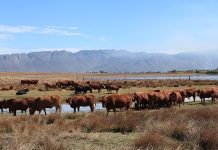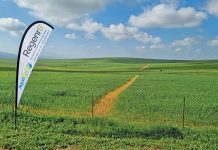Farmer’s son from Ficksburg and ex-English teacher Craig Macaskill is the man behind The National Agricultural Directory, an extraordinary collection of everything and everyone important in local agriculture. Roelof Bezuidenhout spoke to him.
How did the directory come about?
I’d started researching a chapter on agricultural training for the publication now known as the National Skills Development Handbook. I soon realised that anything calling itself a directory in agriculture was usually a publication consisting almost entirely of adverts. If the people offering the training, agricultural service or input hadn’t advertised, they didn’t exist – which was hardly useful. So that single chapter I was working on blossomed into a directory in its own right with 170 chapters.
The research that’s gone into every chapter is astonishing. Please describe this book.
The directory is a gathering of everything and everyone involved in rural development and the agricultural value chain. It’s a full-colour, A4 publication which has chapters on all crops, livestock, inputs, agricultural services, national issues, finance, marketing and so on. An orientation is given in each chapter for that sector and it goes beyond contact details. If the chapter doesn’t have the information you’re looking for, you’ll still be able to get an idea where to find it, or who to talk to.
How do you decide on the content?
Simplicity is important and the information must flow. If a paragraph needs to be read more than once to be understood, it probably needs a rewrite. Space is always an issue.
Books have been written on topics which we try to cover in just one chapter, so it’s necessary to do a lot of reading and summarising. Preparing a chapter can be like writing several English matric language papers in succession!
Where there are success stories, these are shared, as hope is important to our sector and the nation. We also give pointers on how to succeed.
Once a draft chapter is ready, it’s bounced off at least one expert or roleplayer, as it’s not possible for us to be experts in 170 different fields and it’s also quite a challenge to define an industry. But from the feedback we’ve received, it sounds as if we’re getting it right. In the end, a chapter’s accuracy and usefulness is a reflection of the degree of assistance we received from that particular sector.
How did you gather all the information?
When we began the project in 2003, we visited over 400 agricultural bodies to get their buy-in. The industry was mostly supportive and we were given brochures, books and were shown around farming operations.
The project team went to agricultural shows and events and we researched and recorded useful articles, made notes of websites and contacted companies for information. We also incorporated the research of similar projects which had ground to a halt. This was followed by the phase of drafting chapters for sector roleplayers to comment on.
Subsequent to the first edition, we’ve filled in gaps which had become apparent and we incorporated feedback. Some new chapters have been necessary, and when it comes to updating a chapter, you’d be surprised at the enormous changes that can happen within a sector in the space of a year.
What’s our most pressing environmental problem and how can we solve it?
Ignorance. Hopefully the Managing your Environment and Good Agricultural Practice section of the directory will do its bit to spark awareness around the environment and agriculture.
As the profession which arguably lives the closest to nature, farming carries great responsibility. And because the wider community is, in turn, connected to agriculture, it’s fitting that farmers enjoy respect and have the greatest support as they deserve it.
Contact Craig Macaskill at [email protected]. |fw
More about this must-have publication
The 2009 edition of The National Agricultural Directory not only succeeds in keeping up with the rapidly changing global landscape, but is way ahead of any other database for farmers, agribussiness or students. This intensively researched 700-page publication provides a frame of reference for sustainable agricultural development and gives farmers the opportunity to explore diversification into other areas of agriculture. It provides a picture of the subject and names the experts, umbrella bodies and roleplayers and where to contact them.
The handbook’s available in English, but there’s a limited print run of Afrikaans books too. The third edition (2009) will also be available electronically by the end of March. This will enable the user to do searches, make notes and carry the information around with ease.
The book costs R285 including VAT and postage. It can be ordered by calling 0861 668 368 or through www.rainbowsa.co.za. People wanting to update their information and/or provide feedback are welcome to contact the agricultural team on (011) 485 2036 or Craig Macaskill on [email protected].








